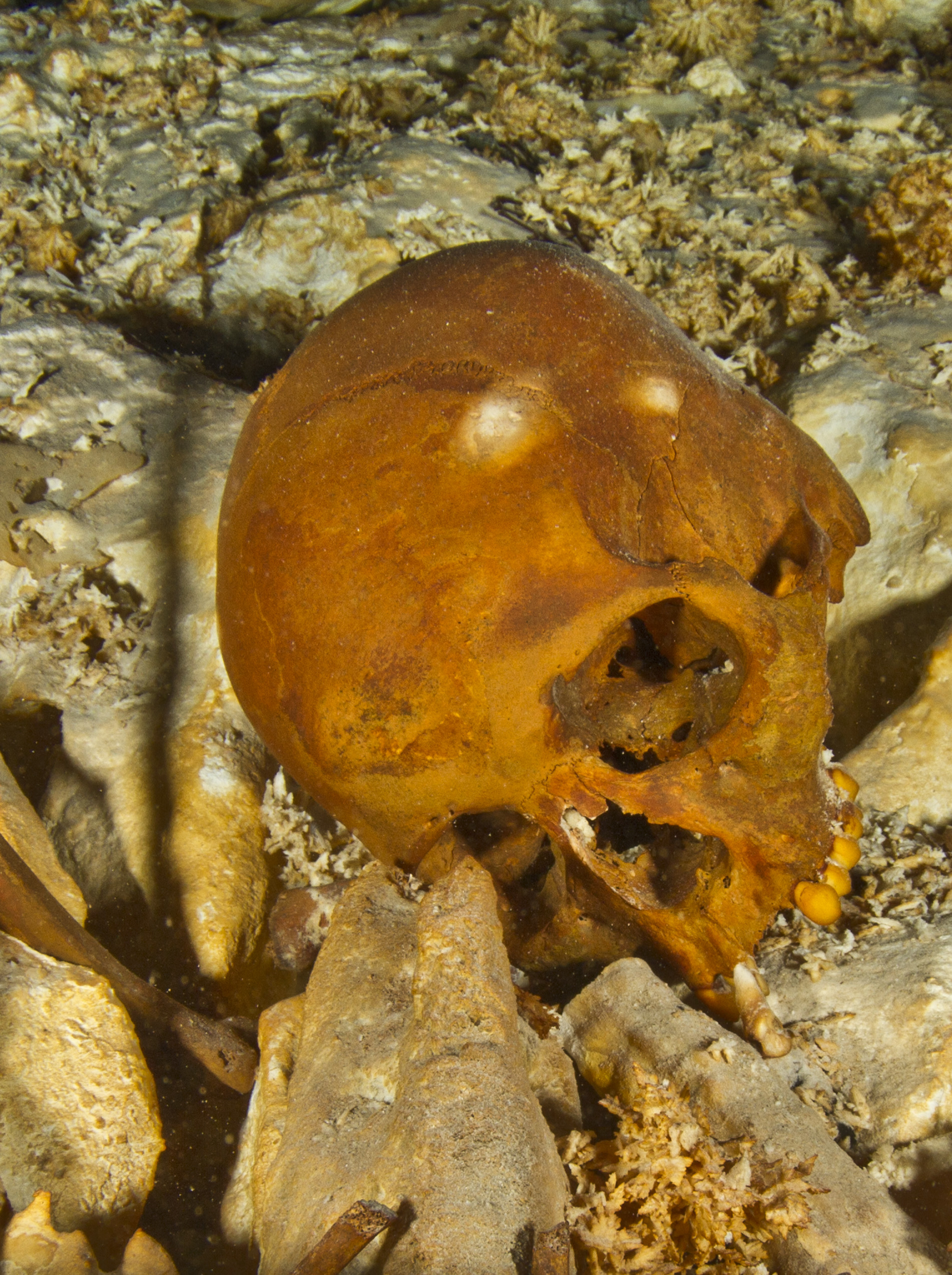
Just a few months ago, a report on the remarkably preserved skeleton of a child buried 12,500 years ago in what is now Montana shed some important new light on the earliest humans to reach the Western Hemisphere. The child, known as Anzick-1, showed a direct genetic kinship to most modern Native Americans. That proved what scientists have long believed: the people Columbus and other explorers encountered when they arrived from Europe were descended from ancestors who had crossed over from Asia more than 12,000 years ago.
Whether those First Americans came in one wave or many, however, and whether they set off from different parts of Asia or one has been unclear. The facial features of many ancient skeletons don’t resemble modern Native Americans all that closely, raising the possibility of different waves of immigration, from different points of origin. Since Anzick-1 didn’t come with a complete skull, he didn’t help settle the question.
But a remarkable new skeleton, discovered in an underwater cave in Mexico, may have just done so. As described in a new paper in Science, the remains belong to a teenage girl, nicknamed Naia, who lived and died between 11,000 and 12,000 years ago. Her skull, like others from her era, is narrower and taller than those of modern Native Americans. Her DNA, however, is a match for people living today.
“This suggests,” said James Chatters, an independent forensic anthropologist at a press conference, “that Paleo-Americans and Native Americans descended from the same homeland. The differences between them likely arose from evolution after [their] gene pool became separated from the rest of the world.” In short, say the authors, Naia is a sort of missing link that argues strongly for a single migration out of Asia and into the Americas.
The conclusion isn’t a slam-dunk, the researchers acknowledge: their genetic analysis is based on Naia’s mitochondrial DNA, which lives outside a cell’s nucleus, and which is passed on only by the mother. In principle, that could point to an intermingling between two immigrant groups, because one female who bred with males in both groups would pass on a single mitochondrial fingerprint. The offspring who resulted might be heirs to very different paternal genes, but they would look closely related. Only DNA from a cell’s nucleus can truly establish a single origin, and, said co-author Deborah Bolnick of the University of Texas at Austin, “we don’t have data from the rest of the nuclear genome.”
They’re hoping to get it, though: only some of Naia’s remains have been removed from the cave, in order to disturb the site as little as possible. But the scientists are planning to retrieve more, which will make more-thorough testing possible.
There’s also the remaining mystery of why the skulls—and thus the faces—modern Native Americans look so different from those of their first-generation ancestors, but it’s a mystery that may have a simple answer. Even subtle changes in diet or environment could have exerted evolutionary pressures that reshaped the skull in some adaptive way. The changes could also be due to what’s known as genetic drift, a more or less random process that happens in all organisms over time.
Chatters and his colleagues don’t pretend that the story of North American migration has now been told. There are so few well-preserved skeletons of this age—a half dozen at most—that each new find has the potential to change things significantly. It took a long time for our ancestors to arrive here and settle the continent, and it will be a long time before we fully understand their journey.
More Must-Reads From TIME
- The 100 Most Influential People of 2024
- Coco Gauff Is Playing for Herself Now
- Scenes From Pro-Palestinian Encampments Across U.S. Universities
- 6 Compliments That Land Every Time
- If You're Dating Right Now , You're Brave: Column
- The AI That Could Heal a Divided Internet
- Fallout Is a Brilliant Model for the Future of Video Game Adaptations
- Want Weekly Recs on What to Watch, Read, and More? Sign Up for Worth Your Time
Contact us at letters@time.com